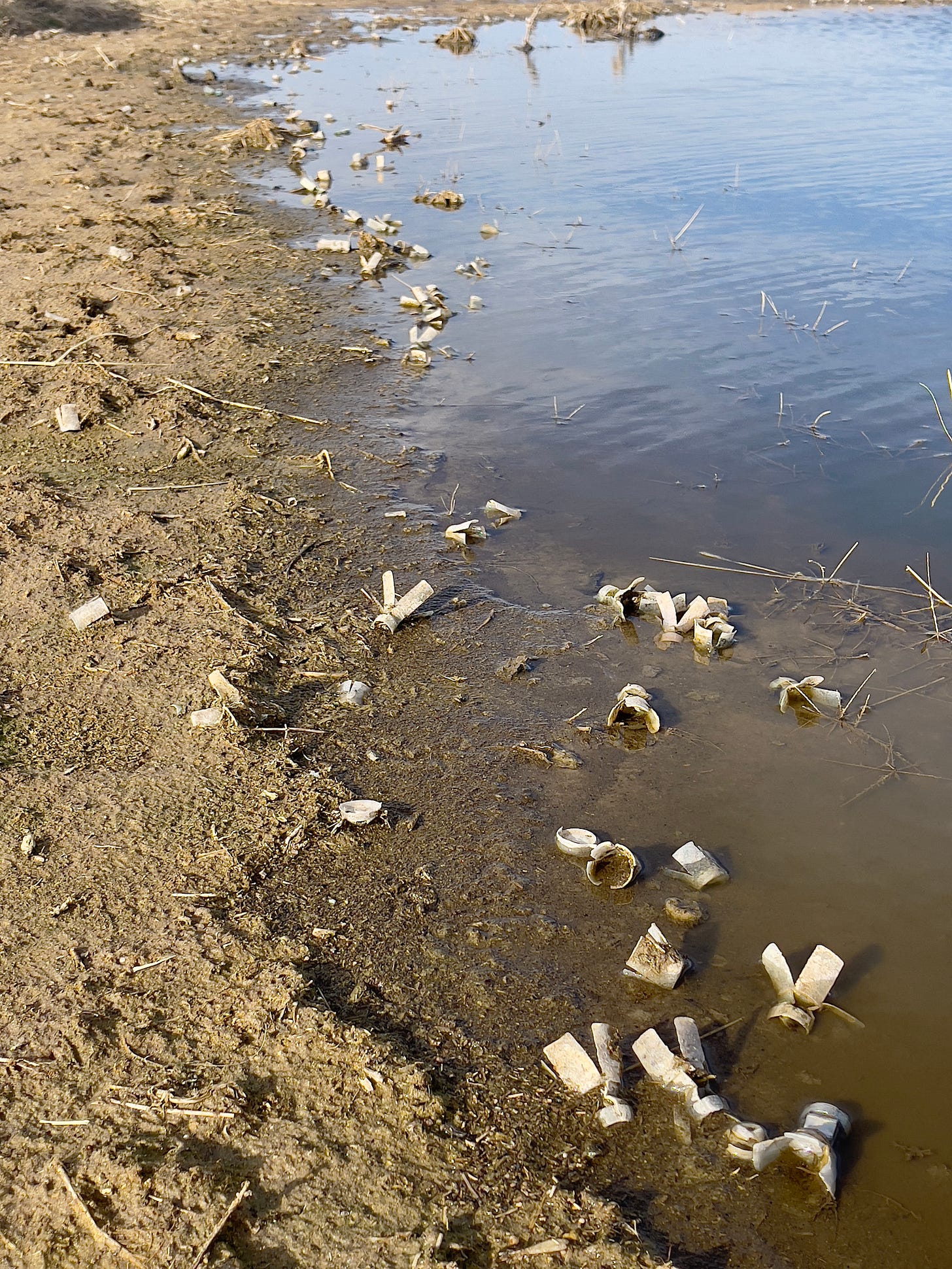One day early in the spring I went for a good long walk on the prairie, which is what I usually do when I’ve got things on my mind.
Some people have therapists and pharmaceuticals, but for better or worse (and I’ll admit the argument for worse could certainly be made for me..) all I’ve got — and all I’ve ever had — is grass and sky and miles stretched out before me.
And it usually works... more or less. I’m still sane, anyway. Mostly.
But this time, whatever was occupying my mind got shoved aside when I first stumbled upon the scene of hundreds, perhaps thousands, of plastic wads lining the shore of a stock tank’s tiny little overflow pond; a body of water so small I could have underhand tossed a rock across its widest point.
The wads were the accumulated detritus from past dove seasons. This stock tank, like most water sources on the state wildlife management area I was walking, is a popular place to be in early September. I should know; I’ve spent many a hot September evening sitting right here on this very tank, burning up shells as waves of dove came in for their evening drink.
So I’m well aware that I am a part of this problem. I am a hunter. An active one, and I’ve shot literally hundreds of dove off this tank over the years. Multiply that by the dozens of similar tanks on this particular WMA that I have, again, shot hundreds of dove on over the years, then multiply me by hundreds of other hunters, and you begin to see the scope of the issue.
It’s not intentional, and due to the nature of a shotshell it’s unavoidable, but every time we take a shot in the field, we leave behind the refuse of our passing, an unsightly and toxic reminder of us having been there. It exits our barrels at high speed and is out of sight and out of mind in a microsecond. But it’s gotta land somewhere, and the creatures that live there must deal with it.
As I walked up to that tank, I jumped a group of green-winged teal off the water. As I walked around the waterline, wads crunching underfoot, I saw the tracks of bobcats, deer, shorebirds, quail, and racoons intermingled with all those bits of plastic.
The visual of it all really made me think, and I sat there for a good long while pondering those spent wads and trying to calculate how many of them may have been mine.
Quite a lot, as it turns out. Over the past 25-odd years I have sent thousands of rounds out into the grasslands surrounding the tanks on this piece of public ground. Thousands of spent plastic wads. Thousands of ounces of lead shot. And that’s just one person.
This isn’t just an issue on areas of concentrated use, either. It affects our uplands, too. Perhaps not as acutely as it does small, heavily hunted bodies of water, but trash is trash, whether it’s concentrated in a small area or more widely dispersed out in the grass.
I’ll be honest: When I was a kid back in the 80s kicking up fencerow bobs or shooting dove off the dams of farm ponds, I never thought about such things. Then again, I never thought that as a 54-year-old man I couldn’t walk around the edge of a pond on a public hunting area without stepping on hundreds of shotgun wads. I never thought (at least prior to 1988) that lead shot had issues. I never thought about (or had even heard the term) microplastics. I never dreamed that someday I’d experience literal crowds of hunters on the public areas that provided me my start in the outdoors.
My point is, times and situations change, and those changes force you to think and see things in different ways and accept new realities. For me, seeing all those wads was a jarring visual reminder of just how dramatically hunting pressure has increased on our public lands in the past few years.
I don’t profess to know what the answers are. It is, as the British say, a sticky wicket. But as I get older and begin to see things in ways that I wasn’t quite able to grasp as a young man, I realize more clearly now that scenes like this aren’t the legacy I want to be a part of, or to serve as an example for future generations of hunters.
As more pressure comes to bear on our public lands — and it is, and it will continue — I hope that we can figure out a way to make our impact on those lands less permanent, less visible, and more sustainable.
Because quite frankly, scenes like this are unacceptable, and we can do better.




